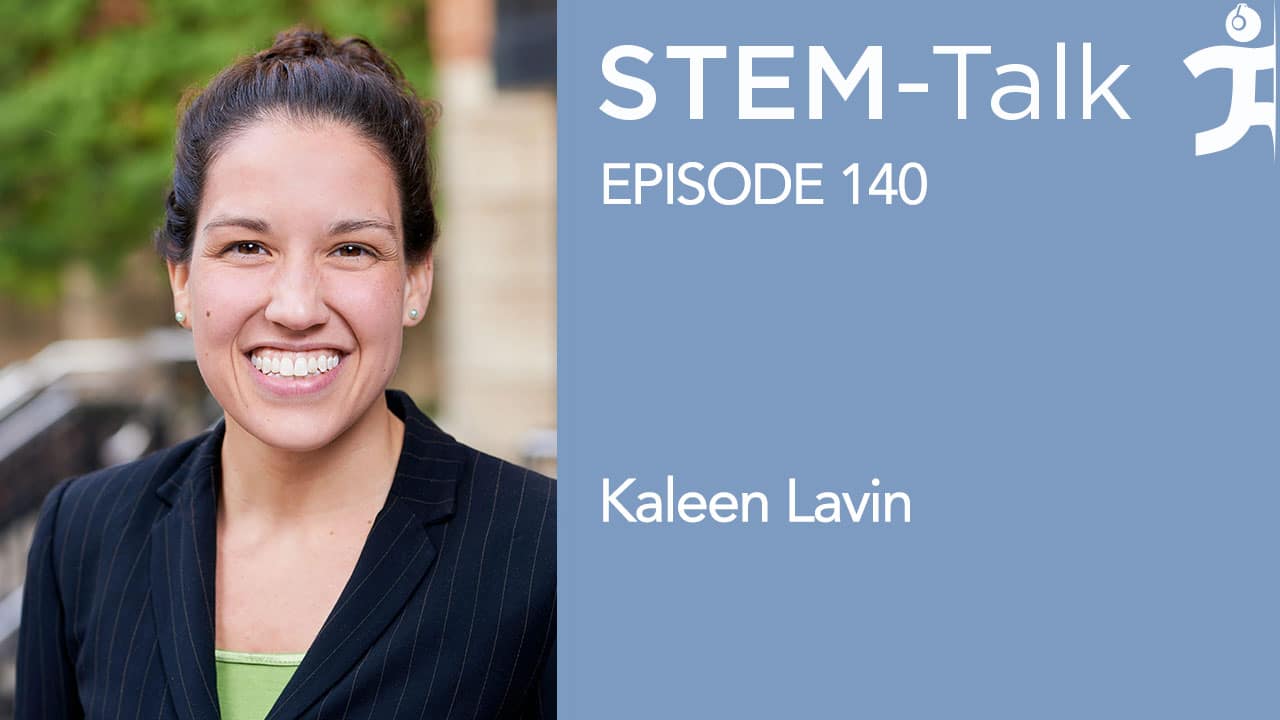
Episode 140: Kaleen Lavin on the benefits of exercise on Parkinson’s and “inflammaging”
 2022-08-10
2022-08-10
Download
Right click and do "save link as"
Today we would like to introduce you to one of our newest colleagues here at IHMC, Dr. Kaleen Lavin, a research scientist who investigates the molecular mechanisms by which the body adapts and reacts to stressors such as exercise, training and aging.
Kaleen came onboard at IHMC last year and is known for her use of computational biology techniques as a means to understand and improve human health, performance and resilience.
She also is interested in the use of exercise as a countermeasure for a range of disease conditions, including neurodegenerative diseases such as Parkinson’s disease. Today we will talk to her about some of her most recent work that examined the molecular effects of exercise training in skeletal muscle and in people with Parkinson’s.
We also talk to Kaleen about her recent paper that took a comprehensive look at the current literature surrounding the molecular and cellular processes underlying the molecular benefits that exercise induces in humans. The paper appeared earlier this year in Comprehensive Physiology and was titled, “State of Knowledge on Molecular Adaptations to Exercise in Humans.”
Kaleen is a graduate of Georgetown University, where she earned a bachelor’s degree in biology. She also earned a master’s in sports nutrition and exercise science from Marywood University in Pennsylvania and a Ph.D. in human bioenergetics from Ball State University in Indiana.
Show notes:
[00:03:02] Dawn opens the interview mentioning that Kaleen grew up in Scranton, Pennsylvania, and asks Kaleen about her passion for music as a youth.
[00:03:25] Ken asks Kaleen about her high school years and how she became a competitive swimmer.
[00:04:26] Dawn mentions that Kaleen was an excellent student growing up, but that it wasn’t until her junior year of high school that she became interested in science. Dawn asks if it were a teacher who inspired Kaleen.
[00:05:21] Dawn asks what led Kaleen to attend Georgetown University after graduating from high school.
[00:05:57] Dawn asks if Kaleen knew she wanted to major in biology when she first arrived on campus at Georgetown.
[00:06:45] Ken asks about Kaleen’s experience of becoming a part of the Howard Hughes Program at Georgetown, which led to her gaining experience working in lab.
[00:08:47] Dawn mentions that Kaleen transitioned from competitive swimming to running during her undergraduate years, running a marathon and half marathon. Dawn asks if Kaleen’s father, who is an avid marathoner, gave her the incentive to start signing up for marathons.
[00:13:19] Dawn asks Kaleen about a faculty advisor who noticed her passion for running and exercise and helped her decide what to pursue for her master’s degree.
[00:15:23] Ken asks Kaleen what led her to pursue her master’s at Marywood University, a small Catholic University in Scranton.
[00:16:56] Ken asks Kaleen what prompted her to pursue a Ph.D. in exercise science at Ball State University, which has one of the longest-standing human performance programs in the country.
[00:17:57] Dawn mentions Kaleen’s experience with no-breath laps as part of her training when she was in high school on the swim team. Dawn asks Kaleen to explain what no-breath laps are.
[00:19:00] Dawn asks Kaleen about a study she conducted for her master’s thesis at Marywood that examined the effects of controlled frequency breath swimming on pulmonary function.
[00:22:13] Ken asks about how Kaleen’s time at Ball State set her up for her post-doc work at Center for Exercise Medicine at the University of Alabama at Birmingham.
[00:24:31] Ken asks what it was about UAB that attracted Kaleen to do her post-doc work there.
[00:26:08] Dawn asks about a study published in 2017 by a group at UAB led by Marcas Bamman where researchers took people with Parkinson’s disease and ran them through a high-intensity exercise program, finding that you could not only help people preserve some function but al...
view more
More Episodes
012345678910111213141516171819
Create your
podcast in
minutes
- Full-featured podcast site
- Unlimited storage and bandwidth
- Comprehensive podcast stats
- Distribute to Apple Podcasts, Spotify, and more
- Make money with your podcast
It is Free
- Privacy Policy
- Cookie Policy
- Terms of Use
- Consent Preferences
- Copyright © 2015-2024 Podbean.com




